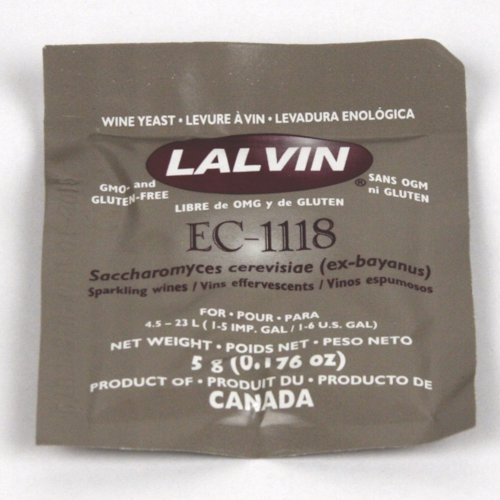Product Overview
Lalvin ICV-D47 Dry Wine Yeast - 5 gram
Lalvin ICV-D47 is recommended for white and rosé red wine production. It is also highly recommended for the production of premium, barrel fermented Chardonnay. When left on lees spicy, tropical, citrus notes develop and the wine is said to have a silky persistence. Check out our Lalvin and Red Star wine yeast charts to compare the different yeasts.
A high polysaccharide producer known for its accentuated fruit and volume. Ideal for barrel fermentation of white wines. Lalvin ICV D47™ was isolated from must in the Côtes du Rhône region in France by ICV, Montpellier. Lalvin ICV D47™ was selected from 450 isolates collected between 1986-1990. The sensory profile of wines made with Lalvin ICV D47™ demonstrate an enhanced aroma and flavour. This can be partially attributed to high β-glucosidase activity. It tends to allow the expression of good levels of terpenes, including citronellol, nerol and geraniol. Due to the release of polysaccharides into the must during fermentation, this yeast contributes to a round, soft palate with good weight. This process can also result in the stability of aromatic compounds.
Specifications:
- Wine Styles: Complex white and Rosé wines with citrus and floral notes. Useful for a wide range of
applications, including mead and fruit cider fermentations. - Grape Variety Pairing: Chardonnay, Gewurztraminer, Riesling, Roussanne, Sauvignon Blanc, Viognier
- Highly recommended for barrel fermentation
- Aroma: Tropical fruit and banana flavor
- Alcohol Tolerance: 15%
- Fermentation Temperature Range: 15-30°C (59-86°F)
- Strain: Saccharomyces cerevisiae var. cerevisiae
- High dominance when inoculated into must containing high numbers of wild strains of Saccharomyces cerevisiae.
- Desirable fermentation temperature: 15-30°C (59-86°F). It is recommended to start the ferment at 17°C (62°F) or higher.
- Low relative nitrogen demand (under controlled laboratory conditions)
- Short lag phase and moderate fermentation vigour.
- Very low production of H2S under low YAN conditions.
- Low-moderate production of SO2







